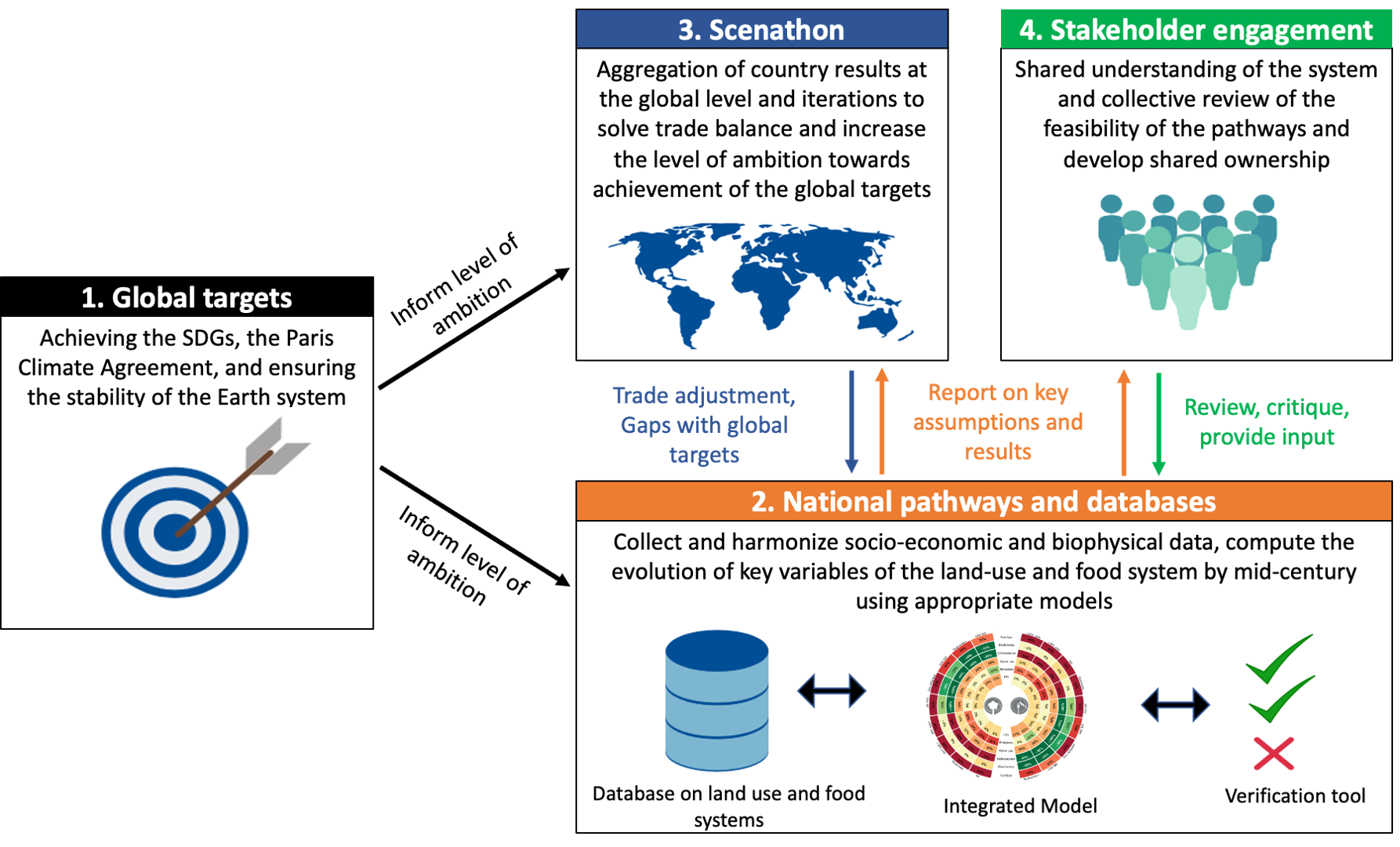Pathways as a method for problem-solving
Countries need long-term pathways toward sustainable land use and food systems. Rigorous pathways can identify levers for action and demonstrate the feasibility of deep transformations of agriculture, biodiversity, other land use, diets, and trade in agricultural commodities. They help ensure that short-term policies are aligned with the long-term objectives of the SDGs and the Paris Agreement.
Pathways help identify implementation challenges and unintended consequences that can be addressed by mobilizing the knowledge and experience of different expert communities and stakeholders. They work as tools for bringing together different government ministries, private companies, civil society, indigenous peoples, and scientists to develop a shared vision of how to achieve sustainable land use and food systems.
We define a pathway as a combination of scenarios that represents the coherent development of a system along a certain trajectory. Scenarios are the suite of possible actions that set a pathway on a certain trajectory. Assumptions are the conditions that a modeler establishes before the model is run to make predictions on, for example, causality chains and changes in specific parameters of the model according to the selected scenarios.
 Figure. Step-by-step FABLE methodology.
Figure. Step-by-step FABLE methodology.
FABLE has developed four steps for coordinating bottom-up national pathways to address national priorities, collectively achieve global sustainability objectives, and balance international trade in agricultural commodities:
1. Global Targets – the country teams jointly decide on global targets to be achieved collectively, and each country team applies them to its country’s context.
2. National pathways and databases – each FABLE country team integrates national data from many different sources and develops mid-century pathways towards sustainable land use and food systems.
3. 'Scenathon' – key parameters and results from the FABLE country pathways are aggregated to determine if the sum of national pathways meets the FABLE targets and to check for consistency in assumptions regarding imports and exports of agricultural commodities. Discrepancies are addressed through iterative refinements of national FABLE pathways.
4. Stakeholder engagement – throughout, FABLE country teams consult stakeholders to test and refine assumptions, support a shared understanding of land use and food systems, and develop shared ownership of the results.


